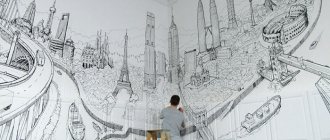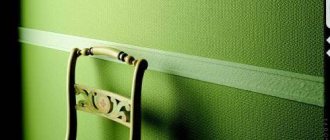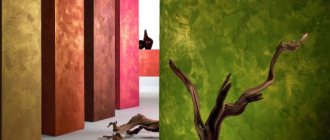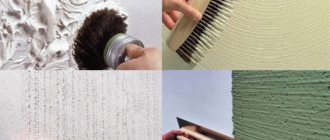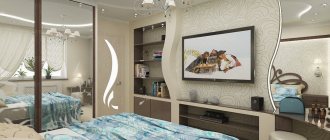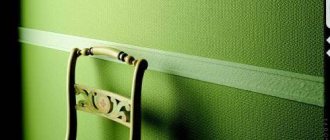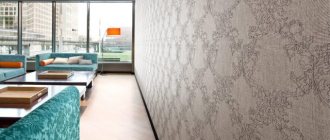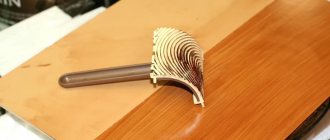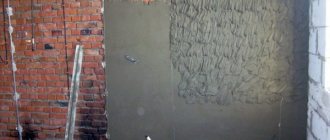Points for and against"
Decorating walls with fabric is a real novelty for many, so you should carefully consider whether it is worth taking on such a design. Like any other design decision, it has both positive and negative sides.
Advantages
Decorating walls with fabric is:
- Unique chic, emphasized by soft features - no other material will give anything even similar.
- The special comfort of a room in which all the irregularities and sharp corners are smoothed out.
- There is no preliminary preparation of walls, which do not need to be specially leveled, unless we are talking about gluing fabric instead of wallpaper.
- Protection from most mechanical damage - the material simply stretches under load without forming breaks or cracks.
- Increased sound insulation compared to paper wallpaper.
- A material with a textured surface can replace decorative plaster without losing its other positive qualities.
- Wall fabrics are available in a wide variety, which allows you not only to choose from a variety of finishing options, but also to combine the color and texture of the walls with curtains or bed linen.
Textile wall decoration is elegant and cozy, however, when deciding on such decoration, you should know all the pitfalls
Difficulties
There is nothing absolutely ideal in the world yet, so decorating walls with fabric also has a couple of dubious aspects that claim to be shortcomings:
- Fabric on the walls can collect huge amounts of dust, which is especially important in big cities and near highways. Developers have already created materials that repel dirt, but their price remains quite high.
- Textiles are not among the most durable materials. More precisely, it can be preserved for a long time, but its appearance quickly loses its original freshness. No matter how hard manufacturers try, the material is still quite easy to get dirty or rubbed to such an extent that it becomes noticeable. As a way out, it is not recommended to attach the fabric to walls in narrow passages, and ideally it is generally better to fix it in such a way that it can be removed and washed.
What fabric should I use for wall drapery?
Almost any textile can be used to cover rough walls. But among all other materials there are still favorites. But they all have one thing in common - they are quite dense. Otherwise, the rough finish will simply be visible through them and there can be no talk of any high-quality design. Professionals, thanks to their accumulated experience, note the fact that synthetic fabrics are preferable for the reason that they are the most convenient to work with and the easiest to care for.
A number of popular materials for these purposes also include: chintz; silk; velours; tapestry; chintz.
But it is worth noting that it all depends on the finishing method. Thicker fabrics are great when hung on a wall; lighter fabrics for wall drapery are ideal for tension installation.
Gluing fabric
Gluing is the most popular, but quite labor-intensive process.
Surface preparation
Before you start decorating the walls with fabric yourself, you need to prepare the surfaces.
To do this you will need:
- putty knife;
- plaster;
- paper or newspapers;
- sandpaper;
- nitro varnish (for stains on the walls, if any).
1. Using a spatula, clean the surface of the wall. 2. All irregularities and depressions are sealed with plaster solution. Wait until it dries completely. 3. The entire surface of the wall is covered with paper or newspapers. When the glue has dried, sand the wall using sandpaper. 4. If after all these operations there are stains on the wall, they are treated with nitro varnish so that they do not appear on the fabric.
Fabric preparation
Unlike wallpaper, textiles are glued to the wall not in sections, but as a whole canvas. It is advisable to choose the widest possible cut so that there are as few joints as possible. If this is not possible, then the wall is measured, strips of material are sewn together, leaving a margin at the top and bottom. The seams are ironed from the wrong side, the finished piece is rolled into a roll.
The material is tested for shrinkage - a small piece is measured, immersed in water, and then dried. They measure again, and if its dimensions have decreased, then the entire section prepared for work is soaked, dried and ironed.
Operating procedure
For convenience, it is recommended to use furniture glue, which hardens after exposure to high temperatures. However, you can use another one (for example, casein).
Furniture glue can be applied to the entire surface of the wall at once; other adhesive compositions are applied at intervals, to individual areas, so that it does not have time to dry.
Work begins from the upper section of the wall. The fabric is applied and stretched. This operation will require 2 people - one will hold the roll, the second will glue the finishing material and carefully smooth it with a roller so that it lies evenly and tightly.
The fabric is temporarily fixed using small nails. Align and at the same time secure by ironing, moving the device from top to bottom. When heated, the glue will harden, securely fixing the textiles to the wall. It is necessary to iron the entire surface of the wall several times so that there are no missing areas.
When the work is finished, the excess fabric on the ceiling and near the floor is carefully cut off, trying to prevent the edges of the material from fraying. The cut areas are additionally coated with glue.
The process of complete hardening of the glue takes about 3 days. After this period, the fabric is carefully inspected; if air bubbles are visible on the surface, they are carefully pierced and ironed.
The final stage is to decorate the edges with molding, baseboard or baguette.
Methods for attaching fabric to walls
Each type of textile has its own characteristics, which forces craftsmen to attach the fabric in different ways. Deviations from the norm are possible, but most often it is better to stick suede, velvet and velor, draping walls with fabric requires the thinness and lightness of the material, and so on.
Pasting
In this option, the resulting result will perhaps be most reminiscent of expensive wallpaper. Covering walls with fabric is popular literally everywhere; even kitchen aprons are made using this method, just the material on top is either varnished or covered with glass. Any towels, tablecloths, curtains and other elements made from the same textiles allow you to create harmony in the design of the room.
The process of gluing walls with fabric is somewhat similar to gluing ordinary wallpaper, but is more complex and requires more care.
Gluing the fabric directly to the walls is perhaps more difficult than all other options. Since we are talking about an analogy with ordinary wallpaper, then the wall, firstly, must be properly prepared - cleaned, puttied, primed. The gluing procedure itself also requires great care - in general, it would be better to trust the professionals.
If you decide to do the repair yourself, you first need to check the degree of shrinkage of the material. To do this, cut off a small piece, soak it in water, then dry it. The dimensions of the piece are measured before and after the procedure, and if there is no significant difference, then you can start gluing. If shrinkage is obvious to the naked eye, you will have to wet and dry the entire roll. Preparation of the material also includes preliminary ironing.
Unlike wallpaper, the fabric is not glued in strips, but on the entire wall at once - for this purpose, pre-cut strips with a reserve are sewn together. To have as few seams as possible, it is better to take a wide cut. Before final gluing, the seams are carefully ironed again. Despite the fact that such a sheet is usually attached only at the edges, at least two people are required for this procedure. It is advisable to start from the side and continue from the top. If the material is heavy, small slats are carefully placed on top of it, which is already glued, and are not removed until the glue dries. The surface of the wall is carefully smoothed with a roller during the process. At the end of the work, the excess fabric around the edges is carefully trimmed.
Methods of finishing with fabric
At the moment, there are several options for finishing work using fabric. Namely:
- Pulling the fabric.
- Pasting.
- Drapery.
The technology of each such process is individual.
Fabric stretching
Stretching fabric is the easiest way to decorate a room. In order for the finishing to be of high quality, it is necessary to use:
- Small wooden slats.
- Self-tapping screws for wood.
- Screwdriver.
- Dowels (if necessary).
- Level.
- Pencil.
- Roulette.
- Using a level, pencil and tape measure, measure the required distance from the floor and ceiling for mounting the wooden slats.
Advice. To simplify the task, you need to draw a line for mounting the rail along the entire perimeter.
- Wooden slats are mounted under the ceiling and above the floor surface on the wall using dowels or self-tapping screws. In this case, it all depends on the design of the wall. If it is brick or stone, then it is better to use dowels. If it is made of drywall, then you can use self-tapping screws.
- The distance between the top and bottom slats should be the same throughout the entire perimeter so that the fabric is stretched evenly and there are no defects in the finish of the fabric.
- The fabric is stretched and secured to the slats using nails with decorative heads. After completion of the work, these caps can be hidden under a decorative decoration in the form of a floor or ceiling plinth.
Advice. Immediately the fabric is attached to the top rail and stretched across the width. After this, it is necessary to stretch it evenly and attach it to the bottom rail gradually so that folds do not form as a result.
Due to the fact that the lath has its own size and acts as a frame for the fabric, a space is formed between the wall and the material, which can be used for insulation work. They apply:
- Thin foam.
- Thin polyurethane foam.
- Felt.
- Mineral wool in small mats.
- How to fix the insulation on the wall surface, because the fabric will not hold it? Everything is very simple. For this, a special construction adhesive is used, which is applied to the surface of the wall and to the surface of the insulation material itself.
Advice. Since fabric can very easily absorb dirt and moisture, the process of insulating a room must be approached very carefully and try to prevent the glue from coming out through the joints of the material.
- If this does happen, you can use finishing tape and hide the defects underneath. It is glued to the joints of the material. It is also worth considering that ordinary glue cannot be used to install insulating material. It can corrode it over time and the insulation will begin to deform.
Note. If the fabric is a light shade, then the insulation should be similar.
Gluing fabric
Gluing fabric has recently become a very popular type of wall decoration. Any type of fabric can be used for this. To carry out such a process, it is necessary to properly prepare the surface. It should be smooth, just like for wallpapering the surface. Application of additional materials:
- There are two options: drywall and plaster.
- Using drywall is a fairly quick and easy way to level the surface. As for plaster, the result of the work will directly depend on the master.
- This method is considered dusty and labor-intensive.
- There is always a lot of garbage left behind. The same cannot be said about leveling the surface with drywall.
Fabric stretching
The technology for decorating walls with fabric is quite simple. You will need:
- wooden slats;
- dowels and screws;
- construction level (hydraulic level);
- nails and hammer;
- tape measure, pencil;
- screwdriver
A free space is created between the wall and the stretched textile, equal to the height of the used slats. If necessary, insulation or soundproofing material can be placed in this air pocket. To fix the material, special glue is used, and the joints are carefully sealed so that it does not leak onto the fabric.
When choosing a material, the properties of textiles are taken into account - for light ones, choose insulation of the same color, dark ones will be transparent.
Progress
Along the entire perimeter of the room, lines for installing the slats are drawn using a pencil, tape measure and a building level. The lines must be located at the same height from the floor and ceiling, while the distance between them must also be maintained so that the attached fabric is stretched evenly and there are no distortions.
Using dowels and self-tapping screws, wooden slats are secured to the marked line.
For further actions you will need two pairs of hands. The fabric must be pulled evenly and tightly enough. In places where it is attached to the slats, it is folded twice to prevent tears. They are nailed using small nails; a piece of leather is first placed under each nail. Another possible method of fixation is with furniture brackets.
At the final stage, the places where the textiles are attached to the slats are covered with plinths or decorative strips.
Preparing walls for decorating with fabric
While fabric is a great way to cover less-than-perfect walls, there are still a few issues that shouldn't be ignored. You must eliminate any leaks, mold, or other plumbing or moisture problems on walls, air conditioners, or around windows. If such defects are not eliminated, the fabric will only emphasize them. Moreover, if problems persist, they can damage the fabric itself.
Before covering the walls with fabric, do any necessary painting work on the moldings, trim, and windows before you begin hanging the fabric. If you want, the moldings can be removed, painted and put back in place after placing the fabric on the walls. Remove switches, covers, old window shade hardware, etc.
If you have chosen a light fabric, and the dark surface of the wall is visible through it, then the easiest way is to whitewash the walls.
Covering, which does not require stitching, is one of the fastest methods of covering walls with fabric. The fabric is glued directly to the surface. Therefore, to achieve the best result, it is necessary that the walls are smooth, light in color and free of cracks. Even on a lightly textured surface coated this way, every bump will be visible.
Wash the walls. If they are stained, wash them with a mild detergent solution; If they are covered with wallpaper, vacuum them thoroughly. If the walls are dark (and your fabric is transparent), then they need to be painted with white paint.
If you are covering new drywall walls, prime them. Otherwise, if you remove the fabric sometime in the future, the paper covering will also come off the wall. Priming the walls will also help the adhesive adhere well. This is especially important for new walls because without the protection of a primer, the adhesive will soak into the wall and result in ruined work.
Remove all switches and covers. Draw a vertical line on each wall to be covered, following the instructions.
Check the color of the glue. Sometimes it is dark and can damage the color of the fabric. Always do a glue test to check if the adhesive will work with your chosen fabric. Leave the fabric to dry and then carefully inspect it for any signs of color deterioration. If the fabric you choose has a repeating pattern, you may need more for each panel, depending on how the repeating pattern relates to the height of the wall.
Look at the photo on how to prepare the walls for drapery with fabric:
Materials and calculation of fabric for wall covering
To decorate the walls with your own hands you will need:
- Textile
- Adhesive: Choose either cellulose or wheat paste powder or pre-mixed vinyl paste. Read the manufacturer's instructions and directions, and look for an adhesive with an anti-mold component suitable for gluing fabrics.
- Liquid starch
- Pieces of fabric or cellophane to protect the floor
- Plumb or level
- Paper clips (tacks) and hammer
- Solid tape measure or meter
- Wallpaper cutting knife
- Glue or paint brushes or sponge
- Wallpaper smoothing brush
- Several clothespin rings from curtain rods
Before upholstering with fabric, you need to measure the width of the wall. Do not make allowances for window and door openings. To determine how many panels you need, divide the total width by the available fabric width.
To determine the length of each panel when calculating the fabric, measure the height of the wall. Add 7.5-15 cm allowance.
To determine the total footage, multiply the number of panels by the length of each panel. Then divide this number by 100 cm to convert centimeters to meters.
Among the disadvantages of decorating walls with fabric, the following can be noted:
the cost of wallpaper is much lower than the cost of fabric covering (however, if you turn to specialists, the services of draping walls with fabric will cost less than the services of the same specialist in wallpapering); Some difficulties arise when installing sockets and switches, as well as when choosing glue.
It may seem that the fabric is less practical, it collects dust and absorbs dirt and, therefore, is more difficult to care for, but in reality this is not the case. The maintenance procedure is much simpler than other coatings.
The walls should be cleaned with a vacuum cleaner twice a year and treated with special products every two years. Stains can be easily removed with washing powder and water. And if the stain is greasy, then a hydrocarbon solvent is used.
When choosing a fabric, it is recommended to seriously consider the color and texture, taking into account the color and texture of the furniture, as well as the floor covering. This is due to the fact that walls upholstered with fabric attract attention and are not just a background, as is the case with wallpaper.
Also think about what will hang on the walls (paintings and photographs) and imagine how it will all fit together. If you all decided to cover your walls with fabric and took it seriously, then you certainly won’t regret it in the future!
Wall decoration in the bedroom
Unusual decoration of the bedroom with fabric trim allows you to emphasize its originality and comfort. The best options for using textiles in a living room include:
- highlighting the head of the bed;
Here, the usual gluing of fabric or complete draping of the wall is allowed. It will look unusual not to completely decorate the surface, but to highlight a rectangular area behind the headboard (although the fabric should slightly protrude beyond the headboard on the sides). You can also make a stylish niche with lighting, inside which fabric will be glued.
- allocation of a sleeping bed;
In this option, you can place a couple of strips of fabric on the sides of the bed (for example, behind the bedside tables). It will also look good when gluing or nailing canvases onto two walls near which the bed is located (that is, behind the headboard and to the left or right of the sleeping bed).
- highlighting the entrance or wall opposite the bed.
It will create special comfort and help the owners start every morning in a great mood.
Wall upholstery with fabric
Today it is more likely not even upholstery, but covering . The technology is similar to that used for installing suspended ceilings. It is unlikely that you will be able to do this yourself, but many companies offer such a service. However, you can also buy special mounting systems from them - a frame made of guides (rubber, metal, plastic or wood) into which the canvas is pulled. By the way, by contacting a company specializing in wall finishing with fabric, you can order a seamless fabric, as well as a backing, thanks to which the wall will be soft. This will increase its soundproofness.
Upholstery
Only at first glance, upholstering walls with fabric seems like a simple task that anyone who has ever held a hammer can do with their own hands. The problem is that for the resulting woven surface to be perfectly even, the walls are upholstered with fabric not on the walls themselves, but on top of a special frame, similar to stretch ceilings or plasterboard. Coping with such a task on your own is quite difficult, but possible.
Wall upholstery with fabric is carried out by construction companies, which, however, are also ready to help those clients who want to try to do the work themselves. From them you can purchase fastening material parts and seamless fabric that does not require stitching. This method of fastening is good because there is no need for preliminary preparation of the wall, and the void can be filled with sound or heat insulation, and electrical wiring can also be hidden there. A ready-made installation system, purchased at a specialized store, makes it relatively easy to remove installed textiles for replacement or washing.
Wall upholstery with fabric using removable wall structures allows you to remove soft panels for cleaning procedures
Draping
Draping walls with fabric is the easiest way for those who want to get away with a minimum of effort. This type of finishing usually does not involve fully attaching the fabric to the walls over the entire surface; it falls freely in folds. Wall drapery, always done with folds, simply involves securing textiles to a horizontal strip hidden under the ceiling.
The cut with which you plan to drape the wall must be significantly wider than it, otherwise folds will not work.
Draping the walls with fabric in the newlyweds' bedroom will bring a piece of romance and comfort.
Fabric, as an original exception, can be attached to four sides of the cut at once. The base can be frames made of wood, plastic or metal. In this case, the folds must be thought out in advance; it is better to immediately highlight them with small seams, otherwise it is not possible to predict exactly how the roll will fold after the walls are draped.
Draping walls with fabric is used to create either an oriental or a European aristocratic style. This design is appropriate in living rooms or living rooms, as well as in public places.
Preparing to decorate the walls
Before proceeding to gluing the fabric, make sure that the surface of the wall is smooth. Note that if you use a plank surface as a base, then after the fabric dries, the relief of the base will appear. Not only the joints of the boards will be visible, but also even small gaps.
The ideal base is a wall that has been previously plastered or puttied. It is better to glue fabrics using casein or flour paste.
Before pasting the fabric onto the wall, check the width and length of the strips. If the fabric you are using consists of several strips, then sew their edges with a double seam in advance. Next, the required amount of fabric is rolled into a roll for convenience.
It is better to start gluing from the corner of the room. Place a cloth on a wall pre-greased with glue and smooth it with a rubber roller. To prevent the fabric from moving when smoothing, a temporary strip is attached in the corner. It is better to place such planks every half meter.
“It’s important to remember that the glue causes the fabric to shrink.”
So it’s better to take the material based on the required length, plus about ten centimeters for shrinkage (before cutting out strips, check how much shrinkage occurs in a particular material or conduct a test - take a small piece of fabric, measure it and wet it, and then dry it and compare its dimensions with the original ones to evaluate the shrinkage).
If you have chosen a material with high shrinkage, then wet and dry it before gluing it. Also, do not forget to immediately secure the fabric with a strip near the ceiling and floor immediately after gluing. Temporary strips can only be removed when the fabric is completely dry.
Wall upholstery with fabric
If you are interested in fabric upholstery, then the algorithm of actions will be similar. This method is suitable for those who do not have the opportunity to level the walls, or who drape the board surface with fabric. The strips of fabric, as in the first case, are sewn into one sheet and stretched onto the wall.
When upholstering fabric against a wall, the nails are placed at a distance of ten centimeters from each other. The seam area is also nailed. The bottom of the fabric is secured with a plinth , and the top is secured with a ceiling strip.
After this, the fabric can also be coated with paint, varnish or enamel. However, it is better to check a small piece of fabric for shrinkage in advance. If your fabric shrinks a lot, then when installing the baseboard, place the nails at a distance of no more than ten centimeters.
Video: Draping walls with fabric
DIY wall decoration: how to properly glue fabric (with photos and videos)
Do-it-yourself fitting and joining of fabric panels when draping is done directly on the wall. The technique is simple: slightly overlap the pattern; then, working on both fabric panels, cut off the overlap. Make sure the room is well lit, especially if you are working at night, otherwise air bubbles will mysteriously appear on your walls during the daytime.
To properly stick the fabric on the wall, follow the step-by-step instructions below.
Step 1: Gluing the First Panel
- Cut the first panel equal to the height of the wall plus 10-15 cm. Using a brush or sponge, evenly spread the adhesive paste onto the wall, covering the top third of the wall. Spread the glue over a surface slightly larger than the width of the fabric. Align the design (not necessarily from the edge) with the vertical line and leave a margin of 5-7.5 cm at the top. If you are covering more than one wall, then place the first panel so that the left side wraps around the corner by 2.5-5 cm.
- Using a smoothing brush, rectangle, or rag, smooth the fabric onto the wall. Start smoothing from the vertical line and then upward. If the fabric is very heavy, use a few sharp nails or snaps to temporarily attach it along the top edge.
- Gently lift and move the remaining piece of fabric away from the wall. Apply glue to the middle third of the wall. It's best to have someone hold the fabric while you apply glue to the wall. If there is no one to help, then secure the fabric using a curtain pin or artist's clip and hook it to a nail driven into the top edge of the wall.
- Smooth the fabric over the area that you applied the glue, working from a vertical line downwards in relation to the previously glued area.
- Repeat the procedure (apply glue and smooth the fabric) on the lower third of the wall.
- Using the sharp blade of a craft knife, trim off the excess fabric along the top and bottom edges. If the fabric does not cut well, wait until the glue dries. Because knife blades dull quickly, you will have to constantly replace them.
These photos show the stages of decorating walls with fabric with your own hands:
Step 2: Labeling subsequent panels
- Cut the fabric for the next panel. Plan 2.5-5 cm on the side margin for overlap and alignment of the pattern. Apply glue to the top third of the wall, including the bottom slab (right margin) on the first panel. Press the fabric into place, making sure the pattern matches exactly underneath the overlap. Repeat the procedure of spreading glue and smoothing on the remaining parts of the panel.
- Hold the straight edge firmly in the middle between the top and bottom overlap. Using a craft knife, cut through both layers of fabric (cut from top to bottom).
- Remove the strips of fabric from where the top overlap was. Then carefully separate the fabric from the wall and remove the overlap at the bottom. Glue the second panel back in place and smooth it again. If necessary, use a brush to add a little more glue to the wall along the seam.
- Trim the top and bottom edges as directed in Step 1, Step 6.
- Repeat the gluing, smoothing and trimming process with the remaining panels.
- Check the papered walls for air bubbles: pierce such areas with a needle or make a small incision there and smooth the fabric onto the wall again. If there are a lot of small air bubbles under the fabric, finish making one wall, then coat with a thin layer of liquid starch. This type of sanding will help you remove bubbles and act as a protective layer against dirt.
Advice. If the edges of the fabric are moving away from the wall, carefully tear the fabric away from the wall, coat the wall with glue and, after gluing the fabric back on, smooth it onto the wall. You can also apply a thin layer of glue to this area. When the fabric softens again, the glue will soak through it into the wall. Smooth the area using a rag or brush.
Advice. If the fabric is very heavy, clothespins or paper clips may not be able to hold it up. In this case, it is better to take large safety pins.
Step-by-step finishing of walls with fabric is demonstrated in this video:
How to choose material
So, we have decided on the type of finishing. Now let's talk about how to choose material. First, let's look at the division into types. So, the fabrics are:
- natural (this includes, for example, brocade, linen, silk). This also includes mixed types, when, for example, wool or flax is added to cotton;
- artificial (viscose);
- synthetic (polyester, polyamide).
When choosing fabric, you need to take into account:
- How does it withstand exposure to sunlight? If it turns out that ultraviolet radiation contributes to fading, it is better to pass by;
- whether the material has undergone special treatment, which increases its service life. Of course, such fabric will be more expensive, but it is not afraid of dust, dirt and sun;
- features of the drawing. Of course, a faded ornament is not good, but too bright can cause fatigue;
About the advantages and disadvantages of drapery
Decorating a room using textile material is not only beautiful. This method has a number of advantages compared to wallpapering. Here are some positive characteristics of textiles:
- exceptional ability to create coziness;
- Can be used for any interior style;
- stays clean longer;
- much stronger;
- easily hides problem areas on the walls: cracks, irregularities, depressions;
- does not require preliminary preparation of walls (in most cases);
- damage caused by shrinkage of the building is excluded;
- there is no problem with choosing rolls of the same shade;
- in case of contamination, you can remove it with a soap solution;
- the fabric does not interfere with air access to the walls - they can breathe;
- with the additional use of foam rubber, good sound insulation is created;
- by using water-repellent impregnation, dust deposition can be reduced;
- do not lose color as quickly as wallpaper;
- if damaged, it is easier to restore.
The most compelling argument in favor of textile drapery is the relatively easy option for performing the work, which does not require special qualifications.
It should be noted that there are some disadvantages:
- high price of material;
- difficulties when installing electrical sockets and switches;
- difficulties in choosing the glue required for the type of fabric used.
Despite these problems, preference is increasingly being given to fabric interior decoration. Its popularity is supported by the emergence of new types of finishing materials.
Cleaning draped walls
Caring for fabric walls is much easier than it seems. The main thing is to follow a few recommendations:
- Simple types of fabric can be easily removed with a regular soap solution.
- It is easy to remove dirt from some materials with a brush with coarse bristles.
- In order not to smear the stain, you need to remove it from the edge, moving towards the center.
- To prevent dust and microorganisms from accumulating in textiles, walls should be vacuumed regularly.
- Some types of fabric can be treated with water-repellent agents. They will contribute to less dust settling.
- It is not recommended to rub stain removers into fabric. This may cause the treated area to lose color or stretch.
Wall decoration in the living room
In a spacious room, you can decorate the walls with fabrics in various ways. The most advantageous design options include:
- fabric decor for all living room walls;
You can glue the canvases or stretch them for each surface. In this case, it is allowed to use two materials of the same color scheme with different patterns (for example, decorate a couple of walls with a canvas with stripes, the rest with fabric with ornate patterns).
- allocation of a recreation area;
Behind the sofa and a couple of armchairs, intended for relaxing with friends and family leisure, you can place fabrics of any brightness and saturation (not contradicting the style and overall color scheme). Unusual decoration will give the room an original look, and at the same time will not distract the owners from relaxing.
- stylization of the wall located opposite the recreation area.
This design allows you to highlight the wall opposite the sofa and armchairs. For decoration, it is recommended to select fabrics with soft colors and discreet patterns or no patterns at all.
Method 4. Finishing part of the wall with fabric
You can cover only one wall or a fragment of a wall with fabric. This is done using a wooden frame, drapery or textile panel. It will be especially interesting to decorate a fragment with fabric if the selected material echoes, for example, the pattern on pillows, curtains, bedspreads or other textile elements that are in the room.
There are quite a few ways to attach fabric; you can choose an option for any room and for any opportunity. Almost everyone can handle draping or gluing material. So decorating walls with fabric is an excellent alternative for those who are tired of monotony and want to experiment.
vote
Article rating
Material selection
If, despite all the difficulties, a decision was made in favor of textile design, all that remains is to decide on a specific type of material. Theoretically, there are no restrictions on choice at all, and the owner of the premises is free to choose what he likes. If we focus on practicality and durability, then the fabric used for wall decoration should be durable and elastic so that there is no constant need to replace damaged material. If you buy fabric for upholstery, you definitely can’t go wrong, since its performance characteristics are approximately the same. If the material was originally intended for finishing, then the manufacturer has probably already processed it properly, and it will be more convenient to work with.
It should be noted that when focusing on doing repairs yourself, special attention should be paid to the choice of material, because the method of fastening depends on it, and they differ in complexity.
What does it look like
To get a more complete understanding of this design method, you need to see examples of such finishing. In several photos presented below, you can see what happens if you stretch or stick woven fabric on the walls instead of traditionally used wallpaper.
Methods for forming soft walls
It’s not enough to choose the material
It is important to decide on the type of result and the design of the soft wall finishing. You can specify the following options for forming a soft surface:
- Drapery;
- Full wall covering using a frame made of slats;
- Fully covered with capitonné style fastening;
- Forming soft tiles and covering walls with them.
Drapery
Drapery can only partially be called a soft surface. Along with soft wallpaper, it only creates the appearance of a soft surface. But it allows you to create a uniform and seamless coating using fabrics of different colors and textures. Most often, when draping, the fabric is evenly glued to the surface.
When draping, the fabric can be glued to the wall in fragments or entirely like wallpaper, or it can be attached more loosely, making the room more comfortable
Complete wall covering using slats
In this option, wooden slats are placed around the perimeter of the wall. The entire space of the wall inside the frame is filled with padding polyester, which is fixed on slats and in the middle to the wall itself or with foam rubber tiles. The edge of the fabric is attached to the top rail. In this case, the edge is wrapped several times and secured with a construction stapler or furniture nails. Next, the fabric is evenly stretched and secured to the bottom rail and sides.
It is important to distribute the tension of the fabric to avoid wrinkles and unevenness. With this method there is no need for intermediate tissue strengthening
However, if the surface of the wall is too large, then it is better to divide it into several sections and form its own frame on each section separately and stretch the fabric alternately over each section
With this method there is no need for intermediate strengthening of the tissue. However, if the surface of the wall is too large, then it is better to divide it into several sections and form its own frame on each section separately and stretch the fabric alternately over each section.
As a result, you can achieve a uniform surface over the entire wall with barely noticeable joints. In addition, using frames, you can create areas with fabrics of different designs and colors, creating a unique design look for the wall.
Wall covering with fastening in capiton style
This method has been widely used for centuries when decorating exquisite interiors in aristocratic homes and institutions.
The use of a frame when installing such soft wall upholstery is not necessary. But it is advisable to form the entire soft wall structure based on sheets of plywood or chipboard. In a particular case, decorative soft panels are formed on the walls, which are designed primarily to decorate the visual component of the interior, and not to provide wall cladding.
Holes are made across the entire surface of the sheet in those places where the buttons will be installed and the fabric will be pressed. You can create any button arrangement pattern. The classic option would be a checkerboard pattern. However, you can diversify it by distributing the buttons and changing the distance between them with different uniformity, for example, from bottom to top.
Capitonne panels can be made with your own hands or bought ready-made and simply glued.
The threads attached to the button are pulled through the fabric and foam and threaded through the holes in the base sheet. On the other hand, the threads are secured with a stapler. It is advisable to secure it with several paper clips, holding the thread in different directions for reliability.
You can strengthen soft wall panels using liquid nails or dowels. In the latter case, it is necessary to leave small areas with unattached fabric in the corners and secure the base separately to the wall. After this, bring the edges of the fabric under the base.
Forming soft tiles
This method is identical in its implementation to the previous option with a base made of plywood or chipboard. Just take square or rectangular pieces of plywood measuring about 450-600 mm. The fabric is fixed around the perimeter on the back side of the tile. The soft tiles themselves are fixed to the wall using liquid nails.
It is advisable to install all the tiles close to each other, preventing dirt and dust from getting between them. This will make it difficult to clean the soft wall later.
***
2012-2020 Question-Remont.ru
Display all materials with the tag:
Go to section:
Preparation and step-by-step instructions
It is necessary to first prepare the base. First of all, you need to wash the painted walls or remove the old finish. If there are cracks, holes from nails and staples in the wall, it is recommended to fill them with putty. Make sure there are no differences in the structure of the base. This effect can be achieved in three stages:
- primer (dries 5–6 hours);
- leveling putty (dries 24–40 hours);
- finishing putty, sandpaper treatment.
Walls made of plasterboard, plywood and partitions made of chipboard also require preparation.
Here you definitely need to seal the seams and fastening points. Before gluing, be sure to check the fabric for shrinkage. To do this, you need to cut off a small piece, wet it and dry it. The process itself is called decatification. Next, you should measure the textiles from the ceiling to the floor and cut them into strips for ease of gluing.
When stretching the strips onto the rail, on the contrary, you need to sew them with a linen seam to achieve a width equal to the wall. The part to be treated with glue is approximately 1 meter. A strip of material is applied to it and gradually smoothed out. Then, using nails, the slats are quickly installed. Nails can be removed after complete drying. Experts recommend treating the casing with nitro varnish.
Choosing fabric for walls
White walls in the interior +75 photos
If you decide to decorate a wall with fabric, it is important to choose a material that is not only beautiful, but also suitable in terms of performance characteristics. From a design point of view, there are no restrictions; the appearance of the finish is chosen taking into account the personal preferences of the owner, but the properties of the fabric matter: 1. It should not stretch too much, but at the same time it should have a certain elasticity so as not to tear under mechanical stress
Highly extensible materials sag over time, which greatly deteriorates the appearance of the finish.
1. It should not stretch too much, but at the same time it should have a certain elasticity so as not to tear under mechanical stress. Materials of increased extensibility sag over time, which greatly deteriorates the appearance of the finish.
2.The strength of the material is also important. It is known that thin fabrics tear more easily than dense ones.
3. Natural 100% linen and cotton are not suitable for interior decoration. They are not very durable and quickly fade in the sun. It is better if the textiles have a mixed composition or consist entirely of synthetics.
4. Of the natural fabrics for wall cladding, jute, jacquard or sisal are considered optimal. Suitable man-made and synthetic options include viscose, polyester, polyacrylic and polyamide.
In terms of performance characteristics, synthetic materials are superior to their natural counterparts, since they are more durable, absorb dust less well, do not fade as much from ultraviolet radiation, and do not accumulate static electricity. But artificial fabrics do not breathe - only natural textiles can provide this effect. The ideal option is materials with a mixed composition.
For wall upholstery, it is good to use fabrics that have undergone special treatment in order to improve performance characteristics. Furniture fabrics are quite suitable for finishing, because they are quite durable. As for the design and color, they should not irritate or tire the person who will live in the room.
